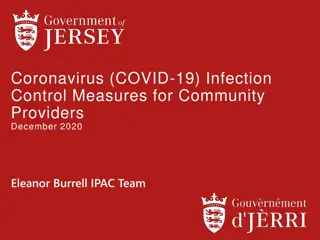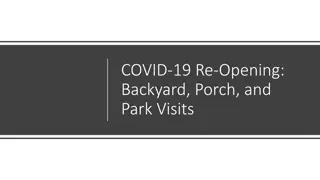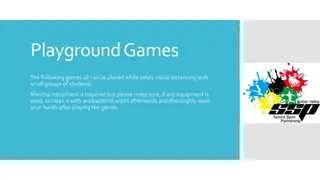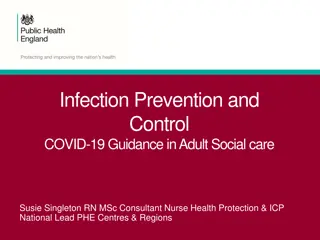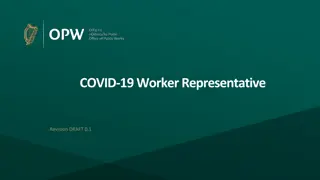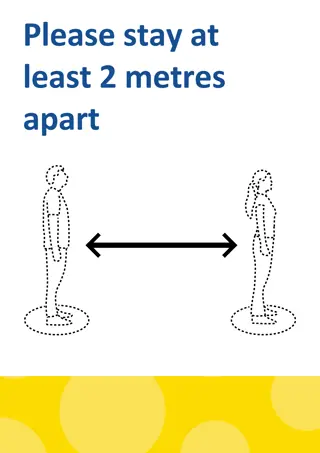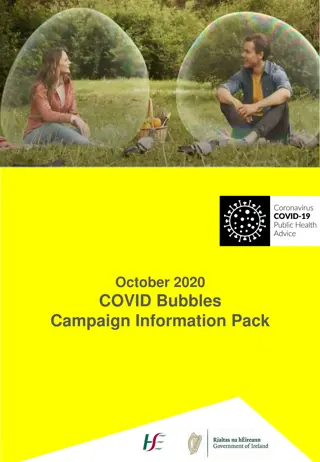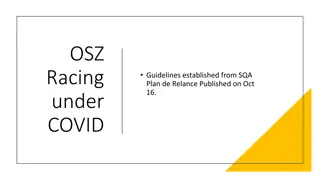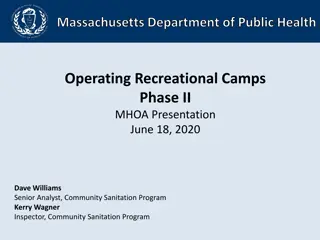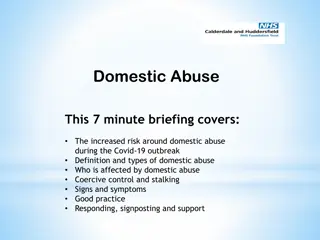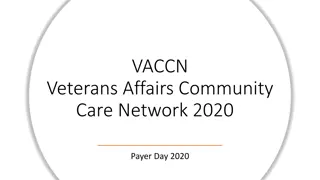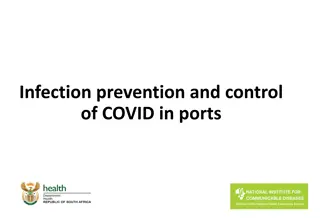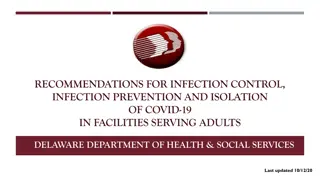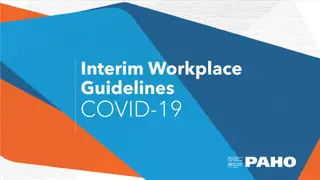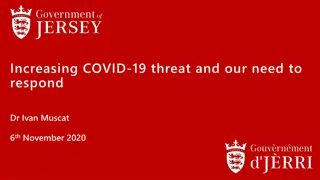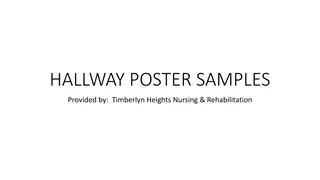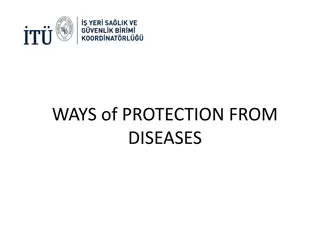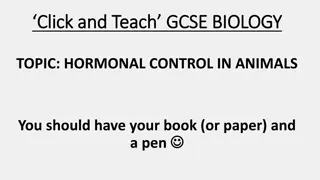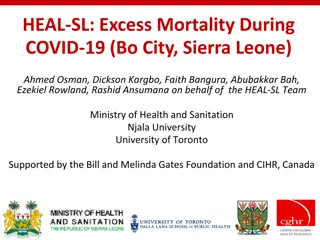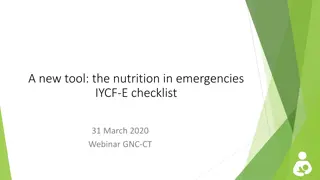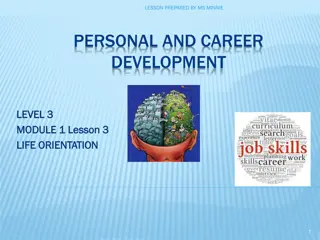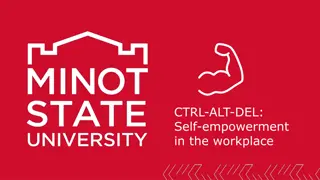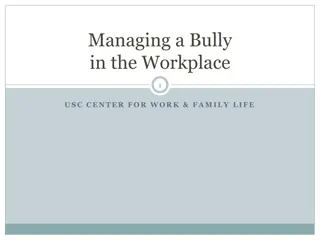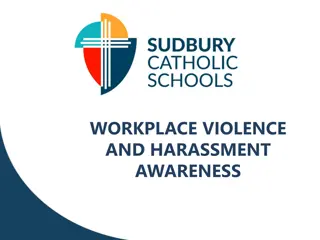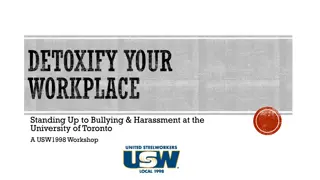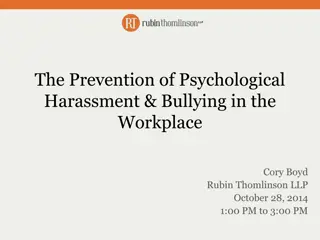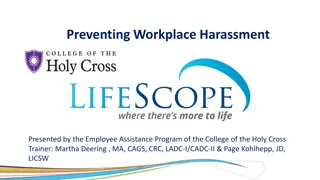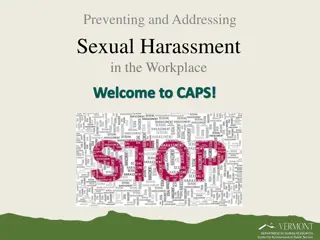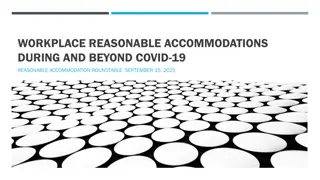Maintaining Social Distancing in the Workplace During COVID-19
During the COVID-19 pandemic, it is crucial to ensure workforce protection through social distancing measures. This toolbox talk provides guidance on maintaining a safe distance, communication strategies, setting expectations, and respectfully challenging each other to adhere to guidelines. By following these practices, we can minimize the risk of infection spread in the workplace.
Download Presentation

Please find below an Image/Link to download the presentation.
The content on the website is provided AS IS for your information and personal use only. It may not be sold, licensed, or shared on other websites without obtaining consent from the author. Download presentation by click this link. If you encounter any issues during the download, it is possible that the publisher has removed the file from their server.
E N D
Presentation Transcript
Covid-19- Toolbox Keeping everyone Healthy, Safe and Well - Social Distancing Authors: Janet Vidler/ Phil Tanner
Overview Note for Manager / Supervisor During the Coronavirus (COVID-19) pandemic it is essential to ensure the workforce is protected to minimise the risk of the infection spreading. This toolbox talk is designed to be delivered to our colleagues, ideally should be 10 min max The toolbox talk applies to general activities, where social distancing measures of two metres should be applied. Where social distancing measures of two metres cannot be applied, each activity has been looked at as part of the overall risk assessment If there is a problem with social distancing when more people come back into the department, please speak to your local HS&W advisor.
Social Distancing Why? COVID-19 is a highly infectious disease that can have severe effects on people, especially those who are vulnerable with underlying health conditions. The virus is likely passed from person to person in communal areas where it is not possible to maintain safe distance between persons without additional mitigation and poor respiratory and hand hygiene habits are evident. If a person is infected while working it can be passed on through families and other contacts You can spread the virus even if you don t have symptoms
Communication Good communication is essential for health, safety and wellbeing management during the pandemic We are motivated to follow the rules if: We understand the benefit to us as a group and individuals we know why we have to do it We know what we have to do We know how to do it + + + It should not be just one-way communication It is important to engage everyone in discussions to get a shared understanding
Setting Clear Expectations Make sure that you follow the social distancing rules at all times. If you don t expect to be challenged by your colleagues If challenged, accept the challenge and address your behaviour It s just the way it is done around here
Challenge Each Other You are empowered to challenge each other on social distancing But remember its from kindness because you care about each other Be respectful, people may get defensive when challenged, remember it s not an accusation.
Challenge Each Other If you see someone compromising social distance, ask them about it using a question such as do you think we are 2m apart this helps to diffuse a situation and allows people to think about. If everyone starts doing it then quickly we ll all follow the rules peer pressure
On Site Wash your hands with soap and water when you arrive on site, as well as regularly throughout the day (especially if you sneeze or cough, and before and after eating or handling food, using any shared equipment or tools, and using toilet facilities), and again when you leave site You should follow social distancing guidelines whilst on site (for example, keep at least two metres away from other workers), unless you are working under specific activity instructions that requires closer working Social distancing guidelines also apply during breaks, when interacting with each other and during mealtimes and breaks Consider bringing your own meals and refillable drinking bottles. Do not share items (for example, pens). All rubbish should be disposed of in the bins provided. If you do need to use local shops, follow rules on face coverings when in the shop and hand hygiene rules on your return In corridors you may pass people and due to limited time within 2m this is fine and extremely low risk
Work Activities Working within 2m should only be carried out under specific departmental considerations. Where social distancing cannot be maintained and there is no protection from a Perspex screen, face coverings are mandatory to reduce the risk for your colleagues. Before you start, consider whether there is any other way you can complete the activity in order to avoid close working and, if you have another solution, talk to your supervisor/ manager If you are using reusable PPE, it should only be used by you, and should be thoroughly cleaned after use Wipe surfaces you are going to use before and after you have used the area You should dispose of single use PPE in clinical waste so that it cannot be reused
Face Coverings Face coverings do not protect you necessarily from coronavirus. They do potentially protect others if worn correctly It can also reduce transmission to hands and then onwards if you touch surfaces They are not mandatory in centres, but we are encouraging colleagues to support the Hands, Face, Space campaign by wearing face coverings in all other areas of our buildings e.g. shared hallways, shared open plan office spaces.
Thank You ! Any Questions ?


